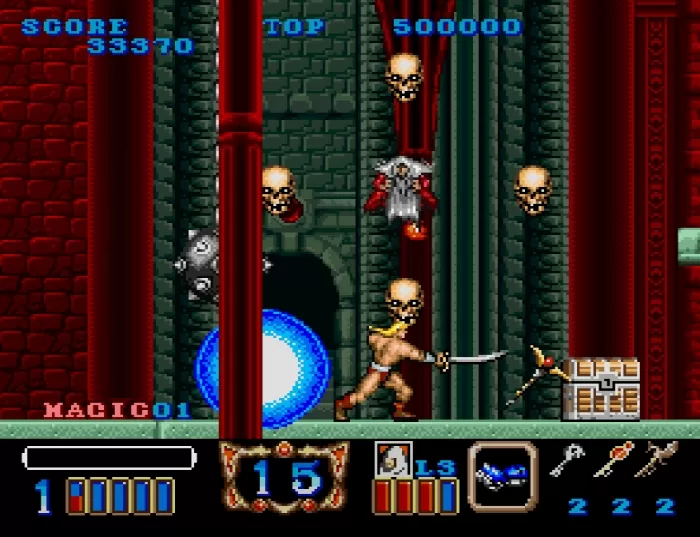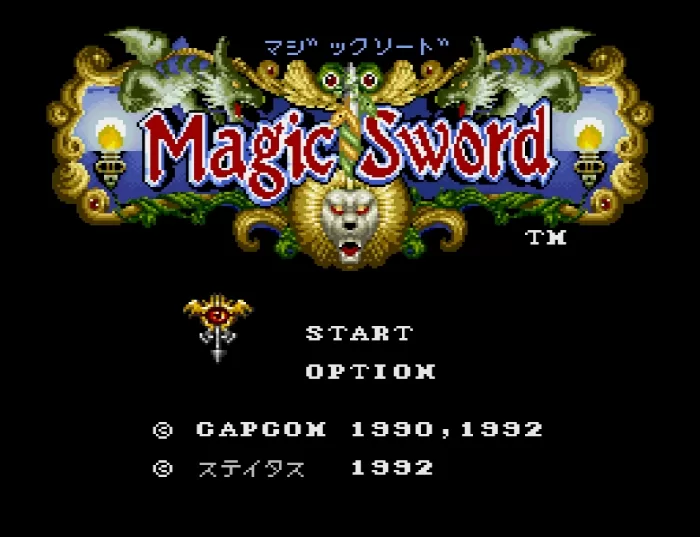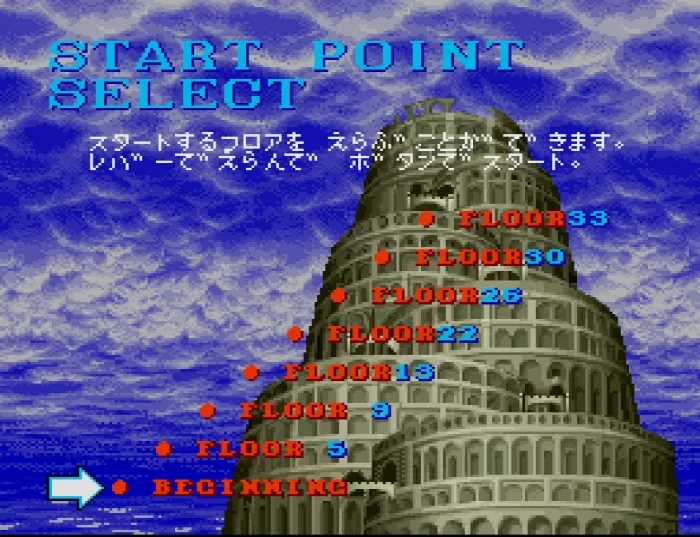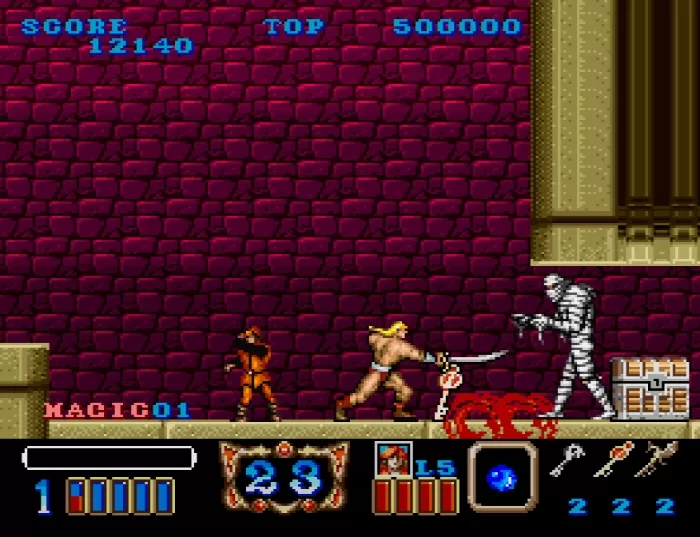
It’s time to hack and slash and hack and slash again with Capcom’s excellent Magic Sword. You might even say that it’s… Magic.
In Retro Game Of The Week I pull a game from my collection and write about why it’s important or interesting. Or in some cases, badly dated and rubbish.
Sometimes, when you play a video game, you’re not looking for a deep exploration into the meaning of existence, or a narrative that will leave you shaken to your core.
You just want something that’ll provide a quick burst of mental and physical adrenaline. Not a smart game to speak of (not that there’s anything wrong with more nuanced games, to be clear), but instead simple dumb popcorn-movie-level fun.

Snakes? Why did it have to be… oh, wait, wrong franchise.
That’s precisely what Capcom’s Magic Sword is. There’s a tower, a hero who, despite variable temperatures insists on wandering around in basically his underwear, a big sword or two (actually more) and plenty of enemies whose faces need rearranging via the aforementioned sword.
Throw in some platforms and you’ve got the setting, plot and action of many a late 80s or early 90s arcade romp, and that’s also what Magic Sword is.

There will be magic. There will be a sword. Not the most complex narrative concept, that.
I first played Magic Sword in its arcade original version at the back of a video store (look them up kids) in Armidale in around… 1991 or so? It only came out in 1990, so that timing would be about right.
The hook with Magic Sword, if it has one, is in the companions you can acquire along the way. Most defeated foes drop something, often just points-related, but with keys you get the option to unlock doors on your way.
From them you’ll get a random companion to join you on your quest. You can end up with an Amazonian Archer, a Ninja, A Priest, A Thief, A Wizard, a Lizard Dude, a Knight, or WWE’s Braun Strowman.
OK, it’s not actually Braun Strowman. But the resemblance is uncanny.

(If by the most bizarre of chances Mr Strowman is reading this, please don’t hurt me.)
I say “end up with” because you can’t entirely choose. The companion that emerges from each door is basically random, but you can switch out with another and another key, as long as that door isn’t itself a trap. Like so many coin gobbling arcade games of its time, Magic Sword loves itself a trap or two… or twenty-seven. Each of your companions has different attack styles, so in a way it’s grabbing the kind of companion-orb concept from so many horizontal shooters of the day and applying it to platform gaming. Which is a neat concept, really.

Thief or Ninja? I’m always going to choose Ninja. Go on, admit it, you would too.
The SNES version that I’ve got — or to be pedantic, as I usually am, the Super Famicom version — is a pretty nice port of the arcade original. There is some noticeable slowdown when matters get hectic, because the SNES does have some issues throwing around a lot of moving pixels at once, no matter how many fancy haze effects it can manage at the same time.
What’s interesting here is that unlike many arcade games, Magic Sword (or at least the SNES version) gives you a level select straight away.
Want to slog through all 50 floors? Go for it from the very beginning, but you can optionally choose to start on level 5, 9, 13, 22, 26, 30 or 33.

This ain’t no hidden menu. This is front and centre, a straight up choice. That was a true rarity in 1990.
That still gives you a fair slog to get through for completion, but what I like here — and especially with a retro view — is that it makes the game a lot more accessible for those times when I do want just that short popcorn experience. I’m not always starting from stage one, because I can choose where to start. You even get a random companion if you start anywhere but level one to keep it interesting.

Are You My Mummy? (Obligatory joke to avoid being thrown out of Dr Who fandom there.)
Magic Sword isn’t revolutionary, but it doesn’t need to be. I wouldn’t pay a fortune for it (and there’s quite a few ports), but it’s definitely a game that sees time in my gaming rotation on a regular basis, for those times when I just need to hit things with a big sword.
I mean, it’s got to be safer to be hitting pixels with an imaginary sword, right?
How to play Magic Sword now

My own cart copy – just the cart, no box — is Japanese, and from memory it ran me about 500 yen. I almost certainly put more than that in a Magic Sword arcade machine back in the day, so I can’t complain about that.
If you want an English-language copy of Magic Sword, it’s on the more expensive side, typically selling for around $80-120 as a loose cart, or around $200 boxed and complete.
Want it cheaper? Japanese copies are the way to go, with some loose copies going for only $20 or so.
This isn’t a game where the language comprehension is a huge barrier, unless you want to follow along with the small discussions had between levels, or boasts of the in-game bosses for the most part.
My own searches couldn’t find any graded copies — and I’m fine with that, I hate games turned into useless slabs — but there are certainly a few folks with (cough) interesting price gambits for Magic Sword out there. Happy retro game hunting!




